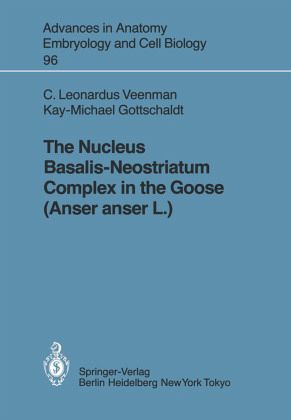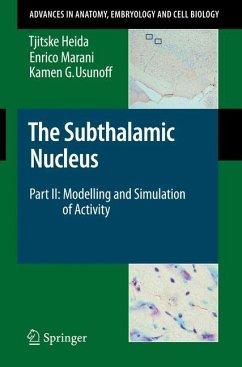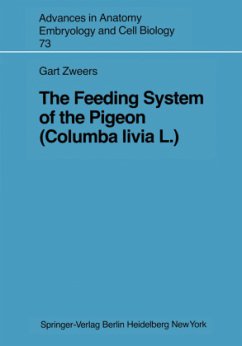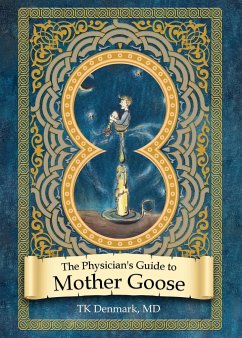
The Nucleus Basalis-Neostriatum Complex in the Goose (Anser anser L.)
Versandkostenfrei!
Versandfertig in 1-2 Wochen
77,99 €
inkl. MwSt.

PAYBACK Punkte
39 °P sammeln!
In birds, the beak is the most important organ for manipulative actions: its manipulative capabilities vary as much as those of the forepaws and snouts of mammals. For the peripheral parts and at brainstem levels, the sensorimotor circuit of the avian oral region is roughly similar to the mammalian, but is strikingly different at higher levels of the central nervous system (CNS) (Ariens Kappers et al. 1936). Our field of interest is the organization of the telencephalic areas involved in the manipulative actions of the bill. The goose was chosen as a subject because of the extensive developmen...
In birds, the beak is the most important organ for manipulative actions: its manipulative capabilities vary as much as those of the forepaws and snouts of mammals. For the peripheral parts and at brainstem levels, the sensorimotor circuit of the avian oral region is roughly similar to the mammalian, but is strikingly different at higher levels of the central nervous system (CNS) (Ariens Kappers et al. 1936). Our field of interest is the organization of the telencephalic areas involved in the manipulative actions of the bill. The goose was chosen as a subject because of the extensive development of the tactile system of the oral region. The mechanoreceptors in the lower and upper beak are innervated by the trigeminal nerve (Cords 1904; Berkhoudt 1980), while the tongue is innervated by branches of the glossopharyngeal and hypoglossal nerves (Cords 1904). In the ganglion semilunare, the perikarya of the fibers of the trigeminal nerve are separated into a distinct ophthalmic population, and two mutually overlap ping maxillary and mandibulary populations (Dubbeldam and Veenman 1978; Noden 1980). In duck and cockatoo both the glossopharyngeal nerve and trige minal nerve relay in the metencephalic principal sensory nucleus of the trige minal nerve (PrV) (Dubbeldam et al. 1979; Dubbeldam 1980; Wild 1981). In PrY the three trigeminal branches are represented in an overlapping dorsoventral sequence (Zeigler and Witkovsky 1968; Dubbeldam and Karten 1978).














